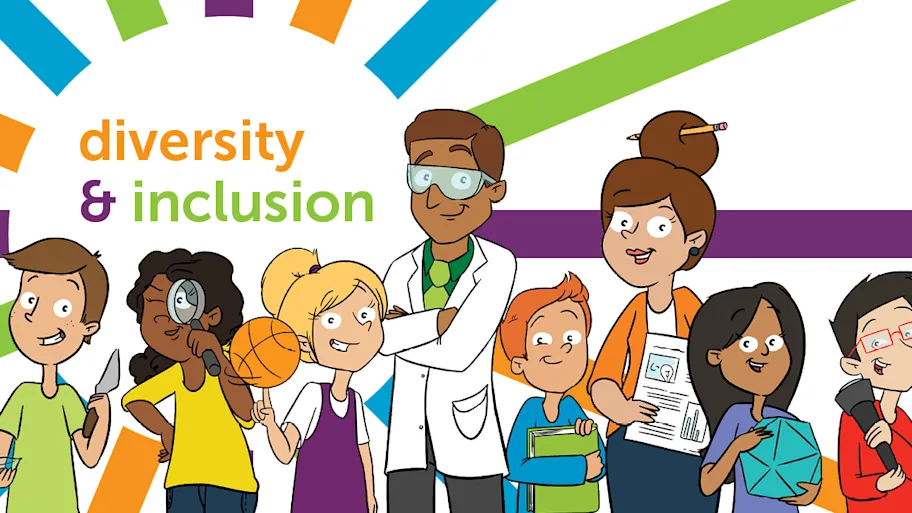
- Science News
- Young Minds
- Making your research accessible to school kids
Making your research accessible to school kids
Our authors talk about their experience communicating their research to a younger audience.
– By Josh Firth and Sarah Firth, authors of How Do Birds Cope with Losing Members of Their Group?

When I was first asked to write this blogpost about my recent venture into a new avenue for science communication for children, I initially thought it wasn’t worth blogging about. The process was so straightforward that I felt there wouldn’t really be much to say. But, after some feedback from others, I realised the simplicity of the procedure is exactly why this new concept should be promoted – so hopefully I can pass on what I’ve learnt about making my recent research accessible to children, and convince you to do the same!
When I heard about FYM, I was immediately enthusiastic about it. Surely any science communication efforts aimed at young people – our next generation of scientists and leaders – is definitely worth the effort! Also, I think that animal behaviour holds a particularly suitable and important role for engaging children and drawing their attention to science. I might be slightly biased on this given that it’s my area of research – but I know it was one of the only topics that worked for me as a kid!
Around the same time of hearing about FYM, I had just published a paper in Proceedings B about how wild birds maintain their positions within social networks following experimental removal of their associates. Almost simultaneously, a paper was published in Nature Human Behaviour showing how Facebook interaction social networks appear resilient to the loss of a user. So, as my paper had some parallels with humans (i.e. how individuals can compensate for losing their ‘friends’ through creating new social ties), and also provided a forum for considering a real-world biodiversity problem (i.e. how natural animal populations respond to losing individuals), I felt like it’d be great if this could be made available to ‘young minds’ in the form of a child-friendly version of the paper.
Almost all science has aspects that would be of interest to the next generation (and if not, you might need to ask why)! But, in the same sense, original scientific research manuscripts are one of the furthest possible pieces of text away from the usual reading material for children. In the case of this paper, network analysis is a relatively complicated process, and the conclusions drawn (in relation to how our predictions of dynamic social systems’ responses to perturbations may be altered given our results) were perhaps not straightforward for lay reading, nor innately exciting to children. Therefore, although I really liked to idea of making this primary research accessible to kids, it also felt daunting.
Fortunately, a couple of years earlier (around the same time FYM began), I carried out a masterful anticipatory tactic for future school-children science communications opportunities: I married a primary school teacher (Sarah). Of course, a couple of other reasons played into this decision (having been together since being school kids ourselves was one of them), but now it was about to pay off for this reason too.
I should point out that marrying a primary school teacher isn’t a requirement for publishing in FYM. Most people I know have a teacher as a friend that they could potentially rope into the process if desired. But, in fact, the majority of papers in FYM are carried out exclusively by researchers (with help from the FYM handlers and editors – as discussed later). However, admittedly in this case, I found that involving Sarah was extremely useful, as she carried out most of the heavy lifting in terms of initially drafting the child-friendly version of the manuscript, and did so in less than a day (I imagine it would have been much more time-consuming for me). So it’s certainly most useful to listen to Sarah for this part of the process:
The Writing: A Teacher’s Perspective
Sarah: “On a personal level, I have always had a great interest in nature and biological sciences. I grew up with enthusiasm for all things animal and enjoyed all nature- based activities. From a teacher’s perspective, I think it is fair to say that science is widely enjoyed by both teachers and pupils alike. It tends to be a subject which lends itself to more of a practical approach which is exciting to teach and in turn inspiring when taught. However, there is a definite need in schools to push the notion of the ever changing, growing aspect of science. Children need to understand that what we know in science is in fact what we know ‘now’ in science. I believe this idea only increases the appeal for children as they are natural investigators. FYM is an amazing platform for this message. The idea that children can read about new scientific research at the same time as adults and professionals is astounding and inspiring. It gives children a wider sense of science.
_Here are a few of the tips that I shared with Josh when we worked on the paper together:_
First you need to entice the reader. As children are naturally curious, a few direct questions such as ‘Have you ever wondered?’ or ‘Can you believe?’ should grab their immediate attention. Use adverbs such as ‘amazingly’, ‘astoundingly’, ‘surprisingly’ to further excite them and pin point the fact that what they are reading about is quite remarkable.
Decide on the key finding/message and make it clear at the beginning of the article and then continually sign post it throughout. This should keep the reader on track and avoid confusion. If you are stuck with where to start with this, try and explain your ideas to a family member. I’m sure Josh will agree this sounds easier than first thought. If that goes well explain your ideas to a younger member of the family… if they can grasp the concept you’ve done the hard part!
Keep the terminology simple and use a glossary for words which cannot be simplified or for technical words. Try to avoid using complex sentence structures, keeping sentences short should mean more complex ideas are easily communicated without losing their meaning.
When using images to support your article, make sure they are either pictures/photographs which further increase the children’s interest, or use very simple graphics which can be explained in one simple sentence.
It’s important to remember when writing up your work for a younger audience that even though the ideas need to be communicated in a child friendly manner, the content must stay the same and factually correct. This isn’t as hard as it sounds, and Josh will vouch for me on that one! You definitely do not need to be a teacher in order to do this.
I definitely found the whole process fun and felt I was contributing to a great cause in communicating new, relevant Science to children! It would be great to see lots of researchers across biology involved in this too, and wish you the best of luck with it (and please feel free to email either of us with any questions!).” __
The Process
At the time of drafting our child-friendly version of the manuscript, only a couple of articles had been published in the Biodiversity section of Frontiers for Young Minds by this point. To kick off the process, I sent a brief pre-submission enquiry to the Head Editor of the Biodiversity section, Prof. Chelsea Specht. This comprised of a brief description of the original research manuscript, the reasons why it may be suitable for FYM, and a short child-friendly summary (basically the proposed abstract). Prof. Specht was extremely helpful and friendly, and provided some initial advice and showed enthusiasm for the article. This encouraged us to put together a polished version of the text, along with the figures, and submit it in the same way that most other manuscripts are submitted. However, the following part was much more fun that the usual paper revision process!
The paper is assigned to an associate editor, and this one was passed to Prof. Sophie der Heyden who again was especially supportive and welcoming. The associate editor chooses the ‘young reviewers’, which is definitely one of the best parts about FYM. This can consist of either a classroom of children, or a few individual kids. Either way, using the young reviewers themselves as quality control for the journal is an excellent idea, and the resulting reviews are tremendous. Admittedly I was partly apprehensive due to the examples of comments I’d come across for other papers, such as:
“I really liked figure 1 and 2. Didn’t really pay attention to figure 3, it didn’t help anyway.” – Age 12
and the dreaded question across sciences…
_“_Why did you decide to write this article?” – Age 11
along with probably something we’ve all thought at least once while reviewing a paper…
“This seems important, but the way it is written is so boring I can’t even get to the end. Could the authors maybe sound excited about what they are doing?” – Age 12
But, in fact, getting the reviews was very rewarding and inspiring, and showed just how insightful the children are. Highlights from the comments about our paper were:
“This discovery is important because it is important as it helps us to learn more about the birds and we can use the research to think about other animal species reactions to loosing members of their community.” – Age 10
And –
“It was about how animals (in this case birds) cope when losing a flock member. The information is about how they act if they loose a flock member. The authors also showed the difference between taking away a bird for long periods and also releasing the birds again almost immediately.” – Age 13
Along with the young reviewers, the manuscripts are also assigned an adult ‘scientific mentor’ who takes the role of a particularly amicable version of a usual reviewer, and flags up the changes that need to be made. After revising the article, a final specialist proof-reader will ensure all the language is child-friendly, and you’ll also have an illustrator provide a colourful illustration for your paper (which I’ll certainly be using for future presentations!).
What are you waiting for?
In sum, I’d definitely recommend you put together a FYM article about your most exciting recent research. If the altruistic prospect of providing children with free and suitable access to the scientific literature isn’t enough for you, hopefully the selfish gains of the fun of the article publication and illustrations at no cost, getting the young reviewers comments, and drawing further attention to your research (our FYM article had >1000 views in just the first week, and equivalent twitter attention of most of my primary research articles), should convince you. If you’re now hooked and looking for more details, check out the brief summary article in Neuron written by Sabine Kastner and Robert Knight (the founder), along with the information on the website.
We look forward to seeing your Frontiers for Young Minds article soon!

This article was originally published on academic life histories website
Find out more:
Frontiers for Young Minds is currently accepting submissions in six specialty sections:
Mathematics
Neuroscience
Earth and its Resources
Biodiversity
Health
Astronomy and Space Science
Researchers interested in submitting versions of their work to Frontiers for Young Minds can find out more here.
Please contact kids@frontiersin.org for additional questions and to find out how to get started!






